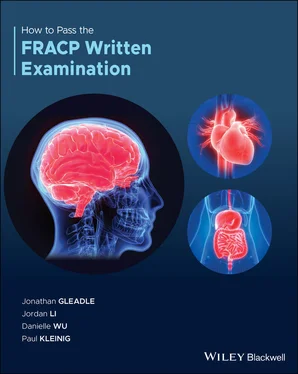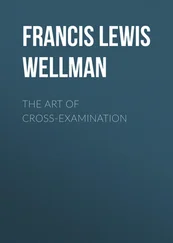19 19. Which one of the following measures is NOT in the Hour‐1 Bundle of care elements in the initial resuscitation for sepsis and septic shock?Administer broad‐spectrum antibiotics.Apply vasopressors if hypotensive during or after fluid resuscitation to maintain mean arterial pressure (MAP) ≥80 mmHg.Begin rapid administration of 30 mL/kg crystalloid for hypotension or lactate level ≥ 4 mmol/L.Measure lactate level.
20 20. A 76‐year‐old man has had an inferior myocardial infarction 4 days ago. Today he is feeling lightheaded. On examination his blood pressure is 85/65 mmHg. An ECG is done immediately. Which one of the following findings is an indication for temporary pacing?
21 21. A 25‐year‐old man is brought into the emergency department by ambulance after a motor bike injury 40 min ago. On examination, his GCS is 9, he is unable to move his right hand due to pain. Both pupils are reactive to light. He does not take regular medications. X‐ray shows a right‐sided distal radius fracture. CT brain shows intra‐cranial haemorrhage in the right hemisphere with no mass effect and no major extracranial bleeding.Which one of the following medications has been shown to reduce head injury related death compared to placebo when given within 3 hours of injury?Desmopressin.Fresh frozen plasma.Prothrombinex.Tranexamic acid.
22 22. Which of the following measurements in the VBG DOES NOT correlate with the readings in ABG in critically ill patients?Bicarbonate.Lactate.pH.The partial pressure of Oxygen (PaO2).
23 23. A 72‐year‐old man is admitted with pneumonia and treated with intravenous penicillin and azithromycin. He is known to have CCF, smoking related COPD and AF for which he is taking sotalol. He has a cardiac arrest in the medical ward. After 3 cycles of CPR, 3 boluses of 1mg epinephrine and 3 defibrillator shocks, he remains unconscious with the below ECG trace.What is the next most appropriate step?5 mg epinephrine intravenously.10 mls of 10% calcium gluconate intravenously.10 mls of magnesium sulphate intravenously.300 mg amiodarone intravenously.
24 24. An 80‐year‐old woman presents to emergency department following a 2‐day history of fever and dysuria. She reports dizziness and light‐headedness. She has a temperature of 39.6°C, HR of 120 bpm and her BP is 80/55 mmHg. Physical examination reveals dry mucous membranes and undetectable JVP. Her chest is clear on auscultation. There is renal angle tenderness. Her investigations reveal the following:TestsResultsNormal valuesSerum creatinine178 μmol/L45–90Urea28 mmol/L2.7–8.0Lactate3.0 mmol/L0.2–2.0Anion gap25 mmol7–17WCC26 x 109/L4–11Haemoglobin90 g/L115–155Urinalysis3+ leukocyte esterase, nitrate positiveAfter taking blood cultures and commencing fluid resuscitation and intravenous antibiotics, her BP improves to 100/60 mmHg and HR is 98/min.Which of the following strategies is most appropriate in further managing her haemodynamic state?Placement of central venous catheter with serial central venous pressure and central venous oxygen saturation (Scvo2) measurement.Whole blood transfusion and serial haemoglobin measurement.Administration of inotropic medication.Continued monitoring of blood pressure and urine output.
25 25. Which one of the following measures is NOT recommended in the treatment of severe sepsis or septic shock, according to the latest guidelines from the Surviving Sepsis Campaign?Use antimicrobial treatment for 7 to 10 days for most serious infections associated with sepsis and septic shock.Use combination antimicrobial therapy for the routine treatment of neutropenic sepsis.Use empiric broad‐spectrum antimicrobials for patients presenting with sepsis or septic shock to cover all likely pathogens.Use intravenous antimicrobials within one hour after recognition of sepsis or septic shock.
QUESTIONS (26–31) REFER TO THE FOLLOWING INFORMATION
Match each of the following inotropic/vasopressor agents with the best description of their mechanism of action:
1 Dobutamine.
2 Levosimendan.
3 Metaraminol.
4 Milrinone.
5 Noradrenaline.
6 Omecamtiv.
7 Phenylephrine.
8 Vasopressin.
1 26. A mixed alpha and beta agonist with greater alpha‐1 activity than beta activity.
2 27. Enhancement of troponin C sensitivity to intracellular calcium.
3 28. Inhibition of the enzyme responsible for breakdown of cyclic adenylate monophosphate (cAMP).
4 29. Direct stimulation of actin‐myosin cross‐bridging.
5 30. A mixed alpha and beta agonist with greater beta activity than alpha activity.
6 31. Pure alpha‐1 receptor agonist.
QUESTIONS (32–35) REFER TO THE FOLLOWING INFORMATION
You are the co‐leader for Medical Emergency Response Team. When you attend the following medical emergency, what is the most appropriate immediate management?
1 intravenous amiodarone.
2 intravenous appropriate antibiotics.
3 intravenous calcium chloride.
4 intravenous calcium gluconate.
5 intravenous epinephrine.
6 intravenous fluid.
7 intravenous dextrose.
8 intravenous hydrocortisone.
9 intravenous insulin.
10 intravenous magnesium.
11 intravenous naloxone.
32.A 26‐year‐old woman known to have asthma and type 1 diabetes presents to emergency department with severe dyspnoea and wheeze. She is unable to speak in a full sentence. Her HR is 120 bpm, respiratory rate of 26/min and BP is 90/60 mmHg. Oxygen saturation while breathing 4 L of oxygen is 91%. She is using her accessory muscles; has quiet breath sounds and few wheezes. Her BGL is 26 mmol/L [3.2–5.5]. She has been given three consecutive salbutamol nebulisers.
33.A 59‐year‐old man who has end stage kidney disease due to diabetic nephropathy presents to haemodialysis centre for dialysis. He has missed his previous dialysis because he is worried about contracting COVID‐19 at the dialysis centre. He collapses just before commencing dialysis. CPR is started, ECG shows ventricular tachycardia, and VBG shows a potassium level of 7.9 mmol/L [3.5–5.2].
34.A 53‐year‐old man known to have cirrhosis due to alcoholic hepatitis is admitted to the Acute Medical Unit after binge drinking. He has been given intravenous thiamine and 5% dextrose infusion. He is found to have an irregular and difficult to palpate pulse with a BP of 110/70 mmHg. His cardiac monitor shows intermittent runs of the following rhythm.

35.An 85‐year‐old man is transferred from a peripheral hospital due to a fracture of neck of right femur. He has been given analgesia, settled in the ward and is fasting and waiting for surgery. He is a fit farmer apart from stage 3B CKD. However, the nurse finds him unconscious 4 hours later. He is afebrile, BP 120/80 mmHg, HR 76 bpm, respiratory rate 8/min, SaO2 90% on 6 L of oxygen. He has bilateral pin‐point pupils.
1. Answer: D
Acute Respiratory Distress Syndrome (ARDS) is a heterogenous syndrome with symptoms of tachypnea, refractory hypoxemia, and diffuse opacities on CXR or CT chest. More than 85% of patients with ARDS have risk factors such as pneumonia, aspiration of gastric contents, and sepsis. Other risk factors for ARDS include pulmonary contusion, inhalation injury, near drowning, non‐thoracic trauma, haemorrhagic shock, pancreatitis, major burns, drug overdose, transfusion of blood products, cardiopulmonary bypass, and reperfusion oedema after lung transplantation or embolectomy.
Direct or indirect insult to the alveolar structure causes alveolar macrophage activation. This leads to the release of pro‐inflammatory mediators and chemokines that attract neutrophils and monocytes. Toxic mediators are released by activated neutrophils causing alveolar injury, leading to loss of barrier function, interstitial, and intra‐alveolar flooding. Expression of tissue factor mediated by tumor necrosis factor then promotes platelet aggregation, intra‐alveolar coagulation, and hyaline‐membrane formation.
Читать дальше













